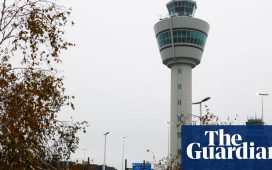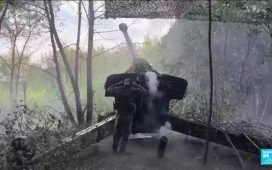
US president-elect Donald Trump is reported to have given his approval to a proposed Lebanon ceasefire plan after being briefed by Israeli strategic affairs minister Ron Dermer. The Wall Street Journal said Mr Trump also “expressed hope that it would get done before he enters the Oval Office” on January 20th.
The draft ceasefire agreement, which calls for a withdrawal of Hizbullah fighters north of the Litani river, about 30km north of the Israeli border in most areas, has been presented to the militant Shia organisation by the US ambassador to Lebanon.
Al Jazeera reported on Friday that Hizbullah is expected to submit its response to the speaker of the Lebanese parliament Nabih Berri.
Lebanese caretaker prime minister Najib Mikati, in talks on Friday with Ali Larijani, senior adviser to Iran’s supreme leader Ali Khamenei, urged Tehran to help secure a ceasefire. Mr Larijani said Iran would support any decision taken by the Lebanese government and Lebanon’s “resistance.”
“We are not looking to sabotage anything. We are after a solution to the problems,” he said. But, referring to Hizbullah, he said Iran would support the “resistance” under all circumstances.
In the framework of the emerging agreement, third-party countries would be allowed to supply arms to the Lebanese armed forces to enforce the quiet in southern Lebanon and ensure that Hizbullah militants remain north of the Litani. The US and Israel are expected to sign a separate annexe to the agreement, allowing Israel to act militarily if Hizbullah violates the ceasefire.
While Israel and the US reportedly want to have a ceasefire agreement in place before January, US special envoy Amos Hochstein is not expected to return to Lebanon until he receives a green light from Beirut to advance a deal.
As the diplomatic efforts continue, the Israeli army has intensified its ground offensive in southern Lebanon to the second line of villages located 5-6km from the border. Israeli aircraft have also continued to strike what it says are Hizbullah strongholds in Beirut and other areas in Lebanon.
Hizbullah is also continuing its attacks across huge areas of northern Israel, firing more than 100 projectiles on some days, even though Israel has succeeded in significantly degrading its military capabilities and eliminating many of its senior and field commanders.
The Israeli military estimates that it has killed 2,500 Hizbullah militants since the organisation started launching rockets at Israel on October 8th 2023, a day after the Hamas-led attack on southern Israel. Some 7,000 Hizbullah fighters have also been injured, according to Israeli estimates, and thousands have deserted, raising hopes in Israel that the time is now ripe for efforts to end the war.
In Gaza, Israel’s military operation continues and there are no signs that a ceasefire is on the horizon to bring about an Israeli withdrawal and the release of hostages who have now spent more than 400 days in Hamas captivity. Israel says 101 hostages, alive and dead, have yet to be returned.
US secretary of state Antony Blinken spoke on Friday to Israel’s new foreign minister Gideon Sa’ar and urged Israel to take additional steps to “accelerate and sustain the delivery of life-saving assistance” to Gaza. They also discussed the need for a diplomatic resolution in Lebanon “that allows Israeli and Lebanese civilians to return to their homes”.
More than 43,700 Palestinians have been killed in the fighting, according to the Hamas-run Gaza health ministry. According to Israel 1,200 people were killed in the Hamas October 7th, 2023 attack and 251 were taken hostage.









